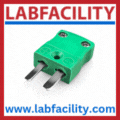
Posted to News on 13th Nov 2024, 09:00
Process device profiles for EtherNet/IP expanded
ODVA has announced that new process device profiles for temperature sensors are now available as a part of The EtherNet/IP Specification. Process device profiles help system integrators and end users to be able to efficiently commission new devices and to more easily replace devices for optimised plant operations.

Process device profiles provide standardisation for process variables and diagnostics for smoother vendor interoperability and easier controller data integration from EtherNet/IP network capable field devices. Device profiles are available for Coriolis flow, electromagnetic flow, vortex flow, standard pressure, scaled pressure, and now Resistance Temperature Detector (RTD) and thermocouple temperature devices.
The value of the standard formatting of process variables, data totals, and diagnostics that process device profiles provide is further enhanced with the new addition of temperature profiles.
The introduction of process device profiles for temperature, in addition to flow and pressure, supports more seamless integration for end users through a greater ecosystem of EtherNet/IP device interchangeability. The temperature device profile contains one instance of the process measurement value object to provide a temperature value and status.
The device profile also contains several process device diagnostics instances to provide diagnostic information. Temperature devices measure relative heat or cold using a thermocouple or RTD device. Thermocouples rely on two dissimilar metals joined at one end producing a voltage difference between the two materials to measure temperature. The voltage is directly proportional to the temperature difference between the two ends. RTDs operate based on the principle that the electrical resistance of a metal increases with temperature. RTDs tend to provide greater accuracy while thermocouples can offer a greater temperature sensing range.
"The addition of a new temperature process device profiles for EtherNet/IP provides end users with another valuable tool to enable more efficient device commissioning and replacement," said Dr Al Beydoun, President and Executive Director of ODVA.
"All EtherNet/IP process device profiles are aligned with the Process Automation Device Information Model (PA-DIM) and NAMUR NE 107 diagnostics. This allows for easier movement of data from the factory floor to the cloud for analysis and action and quicker identification of maintenance issues through standardisation."
EtherNet/IP process device profiles allow for improved vendor interoperability through standardised access to process variables and critical diagnostics such as NAMUR NE 107 status signals as well as more seamless integration with PA-DIM. The addition of temperature devices to EtherNet/IP process device profiles enlarges the ecosystem available devices that offer simpler commissioning and enhanced asset monitoring and integration into higher level PLC, DCS, and cloud-based systems.
ODVA is continuing to adapt EtherNet/IP to the full requirements of the process industries through support of technologies including Ethernet-APL, PA-DIM, NAMUR, FDI, and process device profiles.





